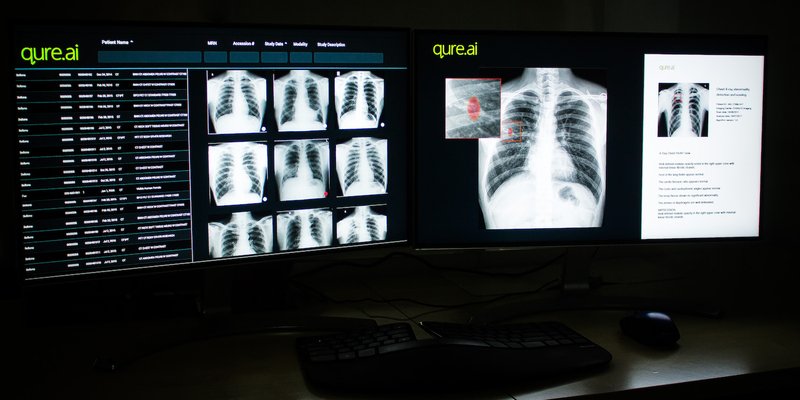
Company: Qure.ai Product: qXR
Early Detection of Heart Failure with Autonomous AI-Based Model Using Chest Radiographs: A Multicenter Study
Diagnostics (Basel), 2024
Abstract
The opportunistic use of radiological examinations for disease detection can potentially enable timely management. We assessed if an index created by an AI software to quantify chest radiography (CXR) findings associated with heart failure (HF) could distinguish between patients who would develop HF or not within a year of the examination. Our multicenter retrospective study included patients who underwent CXR without an HF diagnosis. We included 1117 patients (age 67.6 ± 13 years; m:f 487:630) that underwent CXR. A total of 413 patients had the CXR image taken within one year of their HF diagnosis. The rest (n = 704) were patients without an HF diagnosis after the examination date. All CXR images were processed with the model (qXR-HF, Qure.AI) to obtain information on cardiac silhouette, pleural effusion, and the index. We calculated the accuracy, sensitivity, specificity, and area under the curve (AUC) of the index to distinguish patients who developed HF within a year of the CXR and those who did not. We report an AUC of 0.798 (95%CI 0.77-0.82), accuracy of 0.73, sensitivity of 0.81, and specificity of 0.68 for the overall AI performance. AI AUCs by lead time to diagnosis (<3 months: 0.85; 4-6 months: 0.82; 7-9 months: 0.75; 10-12 months: 0.71), accuracy (0.68-0.72), and specificity (0.68) remained stable. Our results support the ongoing investigation efforts for opportunistic screening in radiology.
Read full study